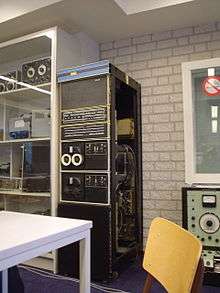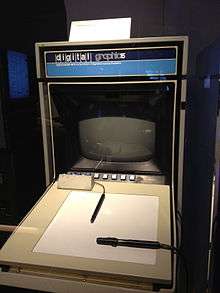PDP-15

The PDP-15 was the fifth and last of the 18-bit minicomputers produced by Digital Equipment Corporation. The PDP-1 was first delivered in December 1959[1]:P.4 and the first PDP-15 was delivered in February 1970.[2] More than 400 of these successors to the PDP-9 (and 9/L) were ordered within the first eight months.[1]:p.16
History
The 18-bit PDP systems preceding the PDP-15 were named PDP-1, PDP-4, PDP-7 & PDP-9. The last PDP-15 was produced in 1979.[3]
Hardware
The PDP-15 was the only 18-bit machine constructed from TTL integrated circuits rather than discrete transistors, and, like every DEC 18-bit system (except mandatory on the PDP-1, absent on the PDP-4) has an optional integrated vector graphics terminal, DEC's first improvement on its early-designed 34n where n equalled the PDP's number.
Software
The first DEC-supplied mass-storage operating system available for the PDP-15 was DECsys, an interactive single-user system. This software was provided on a DECtape cartridge, of which copies were made for each user. This copied DECtape was then added to by the user, and thus was storage for personal programs and data. A second DECtape was used as a scratch tape by the assembler and the Fortran compiler.[4]
Later versions of the PDP-15 could run a real-time multi-user OS called XVM/RSX. The final model, the PDP-15/76 used a small PDP-11 to allow Unibus peripherals to be used.[5]
One other operating systems, developed on the PDP-7, was also available for the PDP-15:

See also
References
- 1 2 DIGITAL EQUIPMENT CORPORATION - Nineteen Fifty-Seven To The Present (PDF). Digital Equipment Corporation. 1975.
- ↑ "The Early Architectures of DEC".
- 1 2 Bob Supnik. "Unearthing The PDP-15's Operating Systems" (PDF).
- ↑ Bob Supnik (19 June 2006). "Technical Notes on DECsys" (PDF).
- ↑ Bell, C. Gordon; Mudge, J. Craig; McNamara, John E. (May 12, 2014). Computer Engineering: A DEC View of Hardware Systems Design. Digital Press. p. 162.